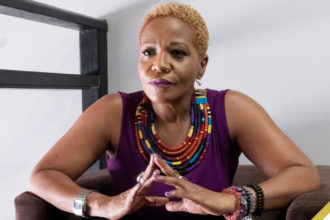A recent article published in the Jamaica Star titled “‘Crawsis’ men driving women to dance with gal pals at parties”, dated Friday, April 6, 2023 (authored by: Kenrick Morgan and Ashley Anguin), sees accomplished Professor and Socio-Cultural Analyst Dr Donna Hope offering her perspective on the cultural shift that sees women enjoying increased independence and social liberties that has supposedly led to ‘more women dancing with each other at social gatherings’.
However, examining the article and adopting the posture of the devil’s advocate, it is crucial to critically analyze Dr Donna Hope’s reasoning on the modern phenomenon of women dancing with each other at parties. While it may be true that women are no longer dependent on men to take them to parties, there are other factors to consider.
Firstly, it is important to note that women dancing with each other is not a new phenomenon. Women have been dancing together for decades, and it is not solely linked to women’s independence. To suggest that women are more selective with their dance partners because they are financially empowered is problematic. It assumes that women who do not dance with men do so because they have more money than the men in the space.
Furthermore, Dr. Hope’s assertion that men rarely come with a female partner in the dancehall is misleading. While it may be true that men go to parties with their friends, it is not predominantly because they seek conquests. It is possible that men come to parties with their male counterparts for companionship and to have a good time. It is unfair to assume that men who attend parties without female partners are there with an agenda.
Additionally, the argument that women are struggling with men having multiple partners, cheating, and pretending to be heterosexual is a narrow view of the complex issues surrounding relationships. It is not just women who struggle with these issues; men also face relationship challenges. According to the United States Census Bureau’s American Community Survey, in 2019, there were approximately 66 million men aged 18 and over in the United States. Of those, roughly 36 million were unmarried, with the lion’s share being single because they were unable to find suitable female partners due to the same factors mentioned above.
It is also important to note that not all women who dance with each other are doing so because they are rejecting men. Women may dance together because they enjoy each other’s company, they may be celebrating a special occasion, or they may simply want to dance with their friends.
Finally, Dr. Hope’s view that people used to find their husbands and wives while dancing at parties is a romanticized sentiment of the past. While it is possible for people to meet their partners at parties. In addition to these traditional social settings, workplaces were common spaces for people to meet romantic partners during the 80s, 90s, and early 2000s. Coworkers often spent significant time together, which could naturally lead to romantic feelings. This was especially true for professions such as nursing, teaching, law enforcement and other white and blue-collar workers, where many single people of similar age and background often toiled together.
In conclusion, while Dr. Donna Hope’s reasoning on the modern phenomenon of women dancing with each other at parties has some merit, it is vital to consider the other socio-economic factors that have led to this trend.












